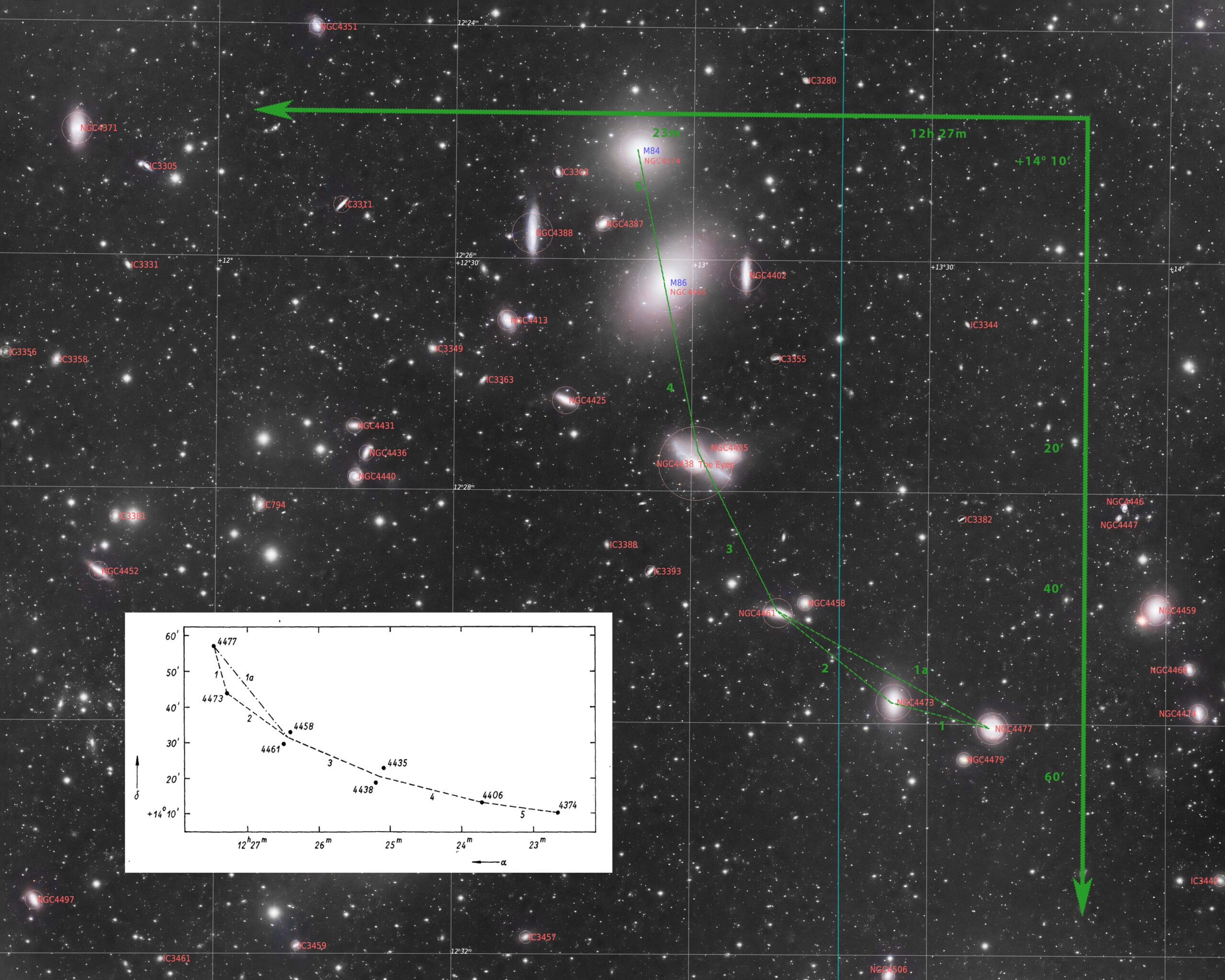Astrobin: https://www.astrobin.com/lniuig/D/
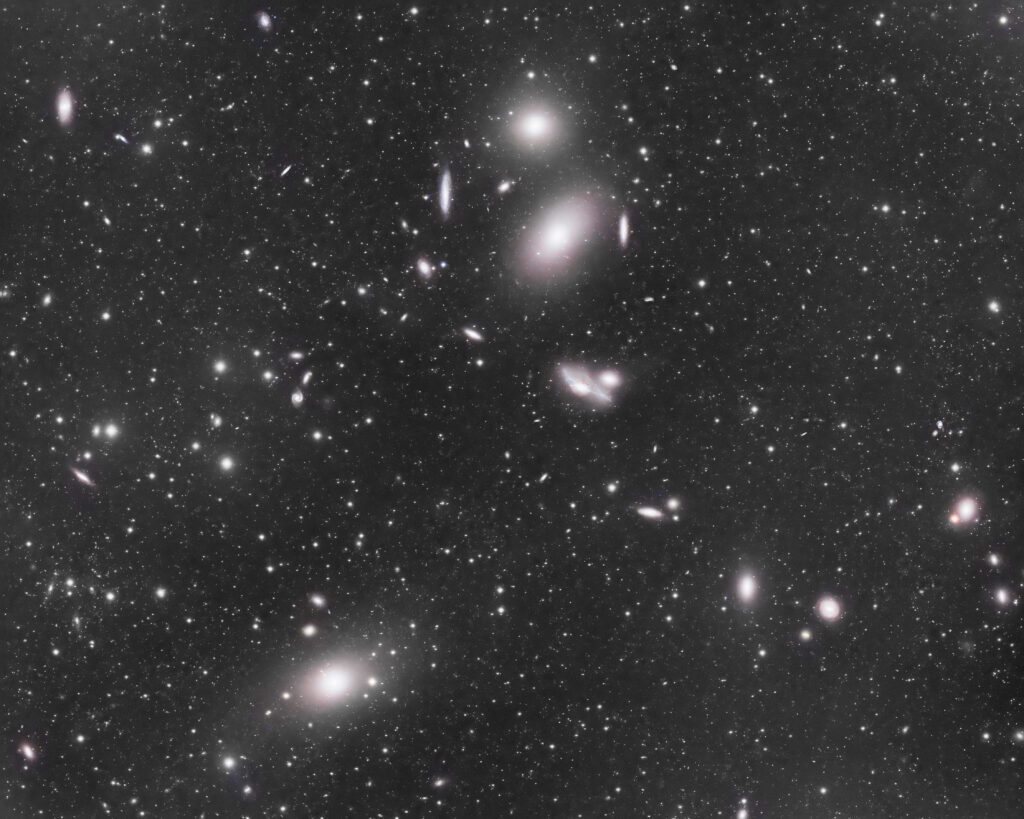
According to Markarian in “Physical Chains of Galaxies in the Virgo Cluster and Its Dynamic Instability”, The Astronomical Journal, vol.66, n.10 – December 1961 [https://ui.adsabs.harvard.edu/abs/1961AJ…..66..555M/abstract] Galaxies NGC4374 (M84), 4406 (M86), 4435, 4438, 4458, 4461, 4473 and 4477 belonging to Virgo Cluster, form a slightly bent chain extending about 1,5 degrees, and are located in a ring bounded by circles centered at R.A. 12h 22m.9, DECL. +14° 28′, with radii of 74′ and 80′, respectively.
Markarian also numbered galaxies in the region R classifying them according to types: E = 31, S0 = 8, Sa = 9, Sb = 8, Sc = 20, S = 7, unclassified = 5 for a total of 88 distinguished members brighter then 13 magnitude.
The contemplated chain could be placed in a square of one radius on the side. The ring which formed about the chain admits the presence in the square of three galaxies because through any three points it is always possible to draw a circle. For this reason, in order to calculate the probability of a chance formation of the chain, it is necessary to multiply the possible number of chance formation of triplets (located in area of 1 square degree) by the probability that some other five galaxies will be located, by chance, in the same domain.
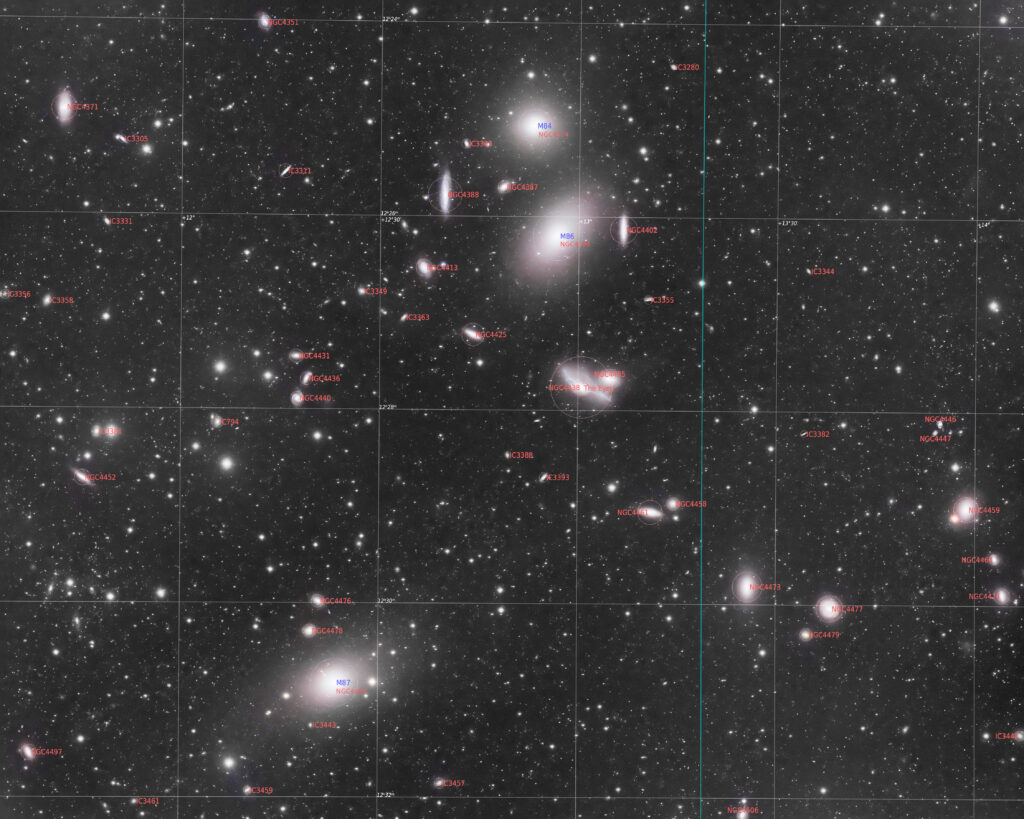
The probability of a chance formation of such triplet of galaxies out of N galaxies available in a domain of area of S square degrees is

The number of such group will be obtained by multiplying  by S, that is
by S, that is  .
.
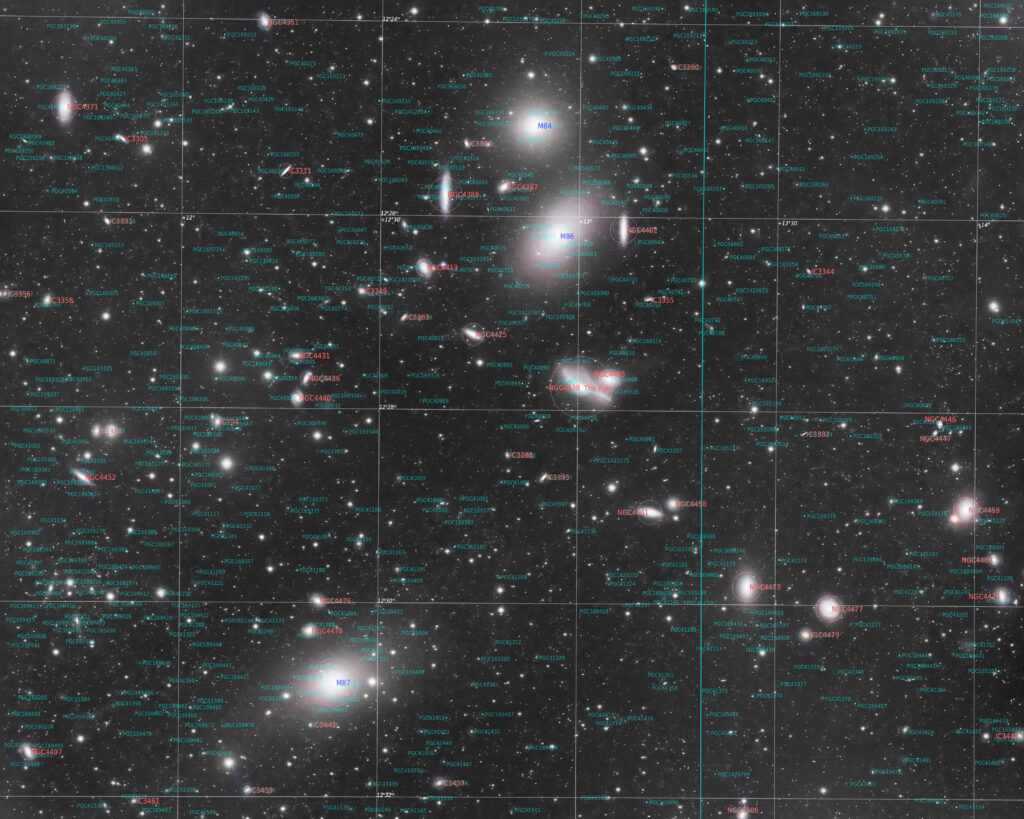
Further the probability that, by chanche, there will be five more galaxies located in the domain of any such group, the domain of area equal to one-seventh square degree, will be

For this reason the probability of chance formation of the chain is determined by

a probability of a magnitude order by 
Such small possibility lets Markarian exclude that the chain of galaxies in Virgo cluster is not a chance grouping but a real physical system, exceptionally young one, in site of considerable dispersion of radial velocities of particular members, observed deviations from the linear structure are exceedingly small.
Intuition and probabilistic interpretation of Markarian found confirm within Wien Meurers 1975 study “Markarian’s Chain of Galaxies in Virgo”, in Astron. Nachr., Bd.298, H.2, 1977 [https://ui.adsabs.harvard.edu/abs/1977AN….298..103M/abstract ]
According to Meurers the chain contains eight galaxies of different types, and there are six points in the chain marked by galaxies, where 2 points are made by a pair of galaxies.
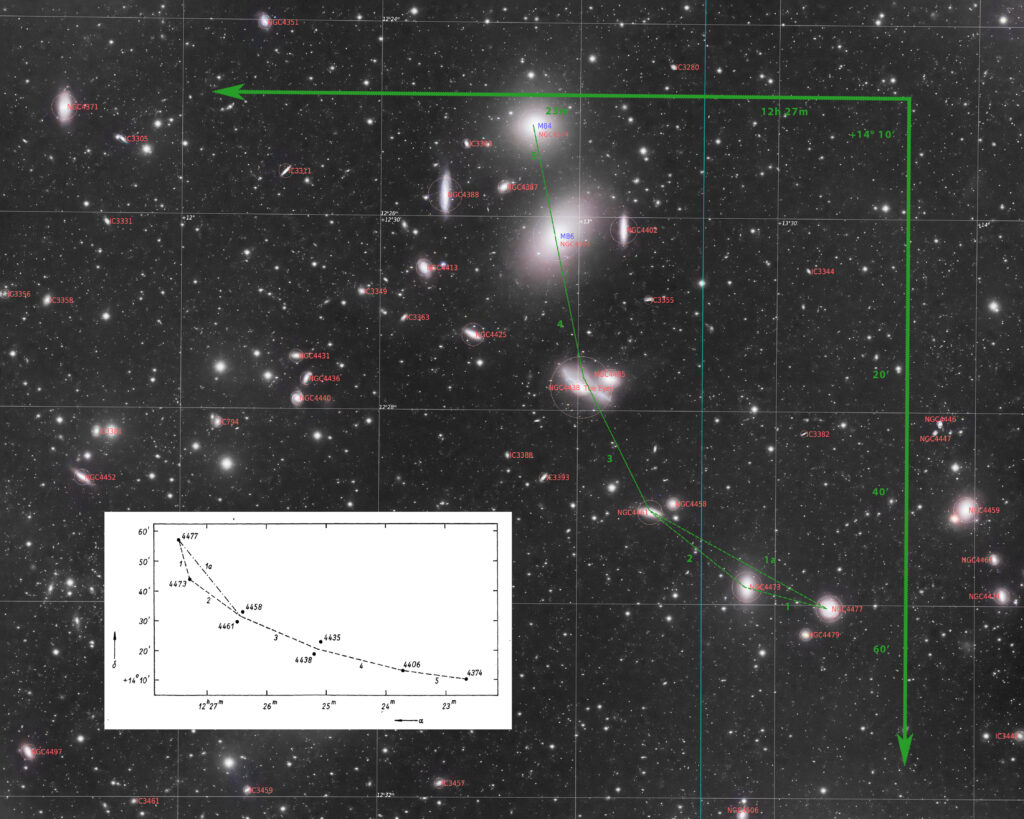
On the basis of a random number generator given by Mac Laren and Marsaglia, Meurers demonstrates that Markarian’s chain of galaxies in Virgo is not accidental in its inner structure; cfr. Mac Laren, M. D., Marsaglia, G.: 1965 “Uniform Random Number Generators.” in J. Assoc. Comput. Mach. 12: 83-89 [https://dl.acm.org/doi/pdf/10.1145/321250.321257 ]
Finally Meurers found confirmation of Markarian’s interpretation of the configuration as an unstable association in radial velocity of NGC 4473 and 4406, considered as main intruders within the randomness of chain, as these objects show the largest radial velocities of all the members of the chain, and seems to leave the configuration into opposite directions, thus such fast movements will cause positions within the configuration deviating form position expected in case of randomness.
Meurers states this concerns a statistical equal-distribution, and the inner structure of the chain is not in conformity with such a distribution and the galaxies with the largest radial velocities are intruders.
A third intruder, or variant, was found by Litzroth in 1983 “Die MARKARJAN-Galaxienkette im Sterbild Virgo” [https://doi.org/10.1002/asna.2113040204 ] in NGC4374 (M84) which presents a radial velocity which discords from the regular rotating chain system moving at rate  of about 700 km/s away from earth, thus NGC4374 seems not to be involved in the rotating part of the chain, neither does it fit within the kinematic system, nor into the cascade scheme or the dual-graduated mass ratios of the rotating chain.
of about 700 km/s away from earth, thus NGC4374 seems not to be involved in the rotating part of the chain, neither does it fit within the kinematic system, nor into the cascade scheme or the dual-graduated mass ratios of the rotating chain.

